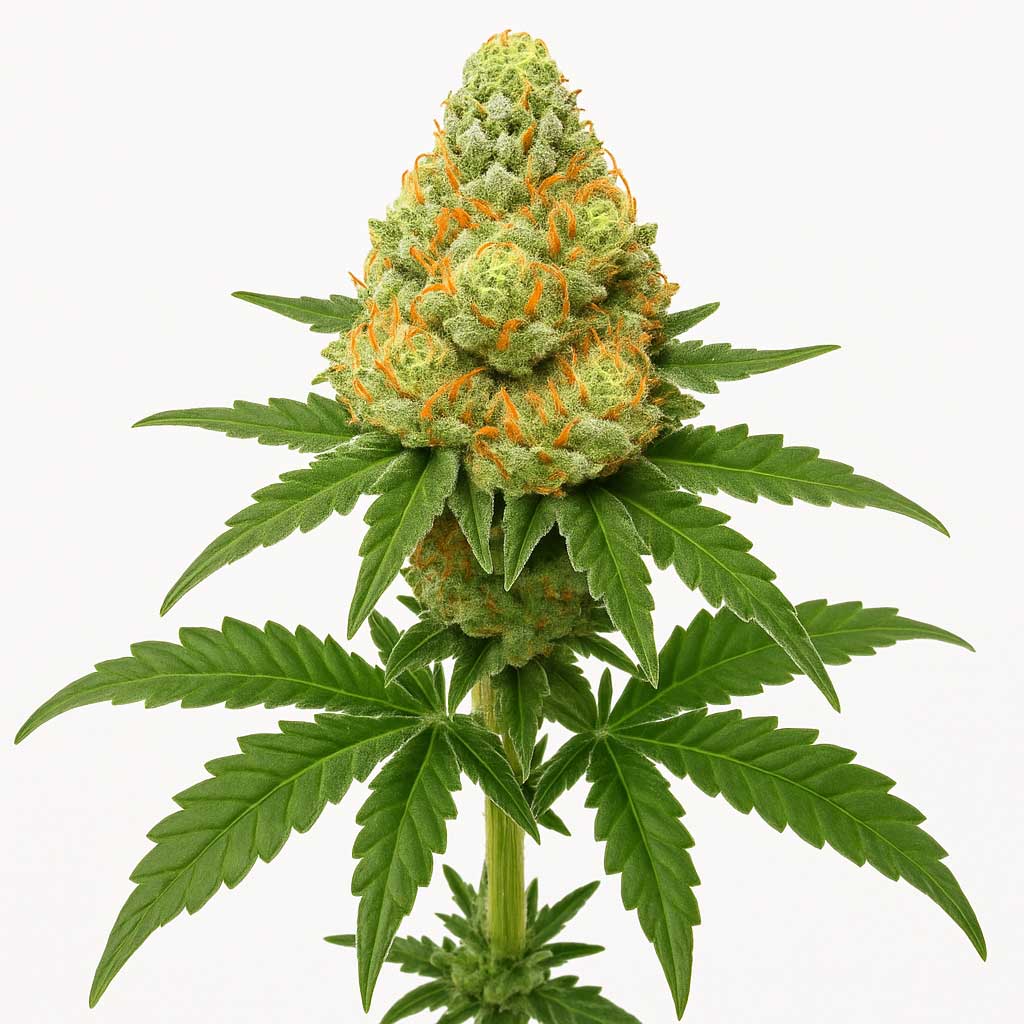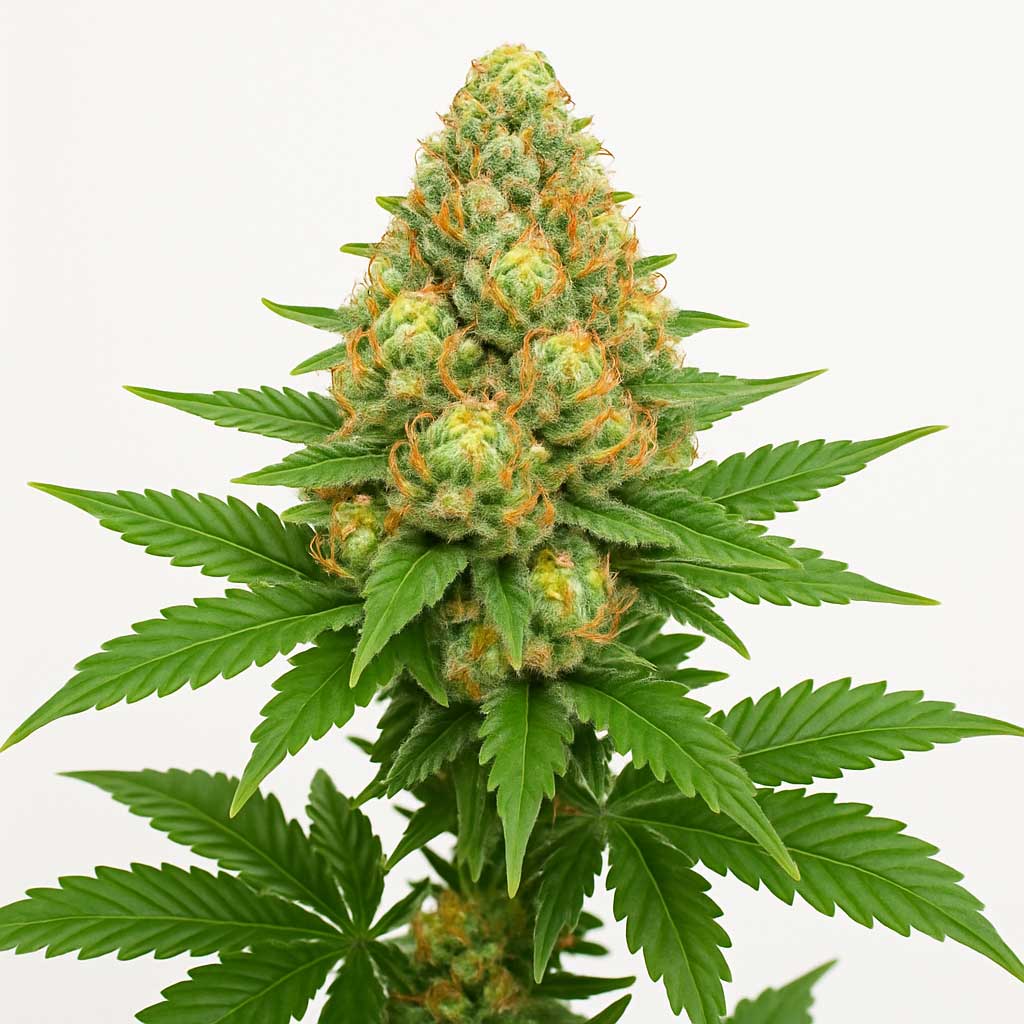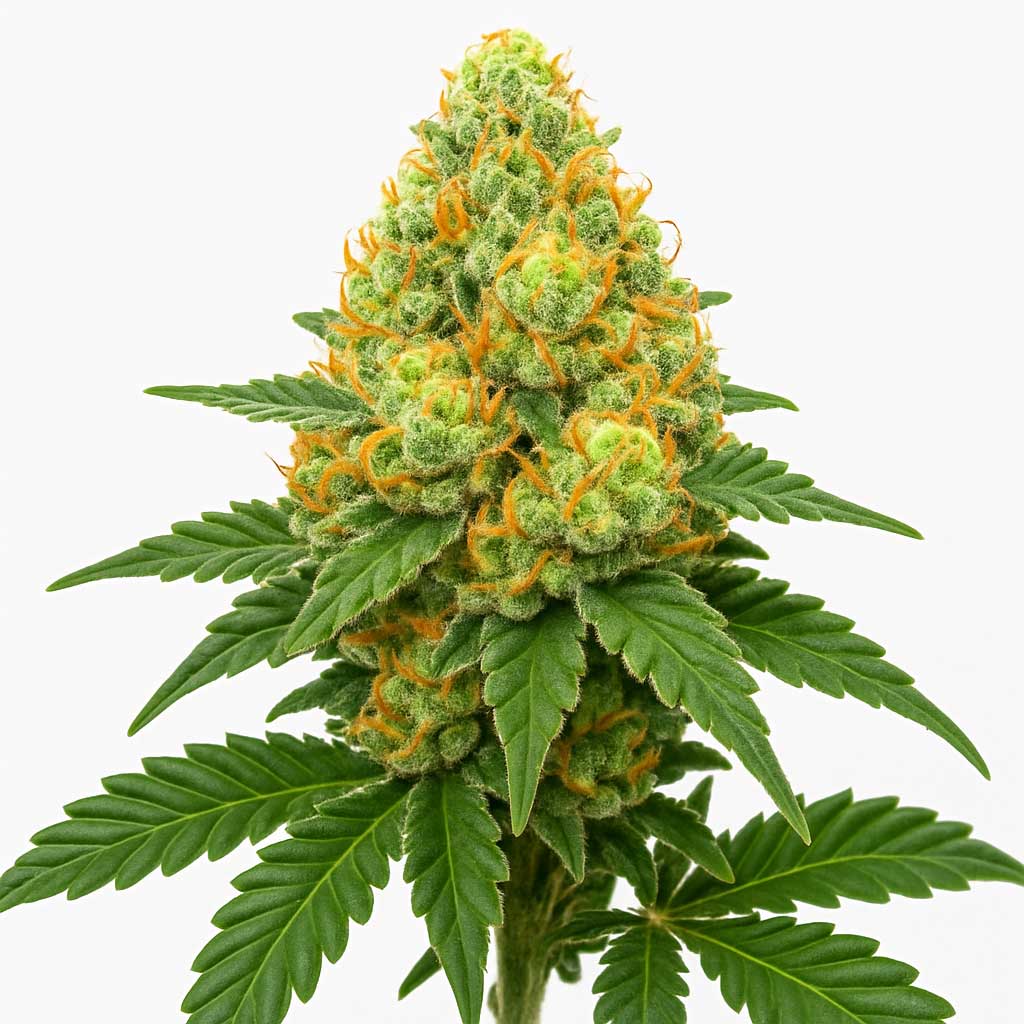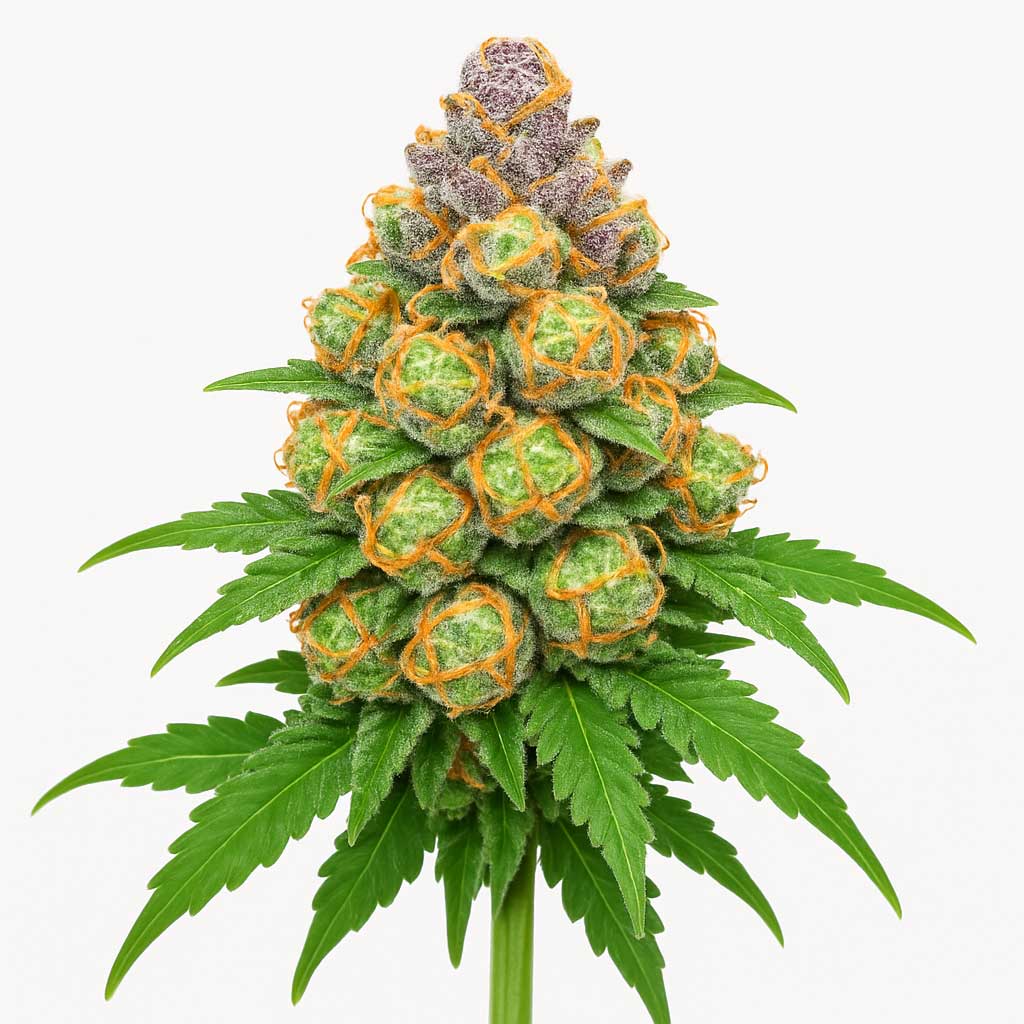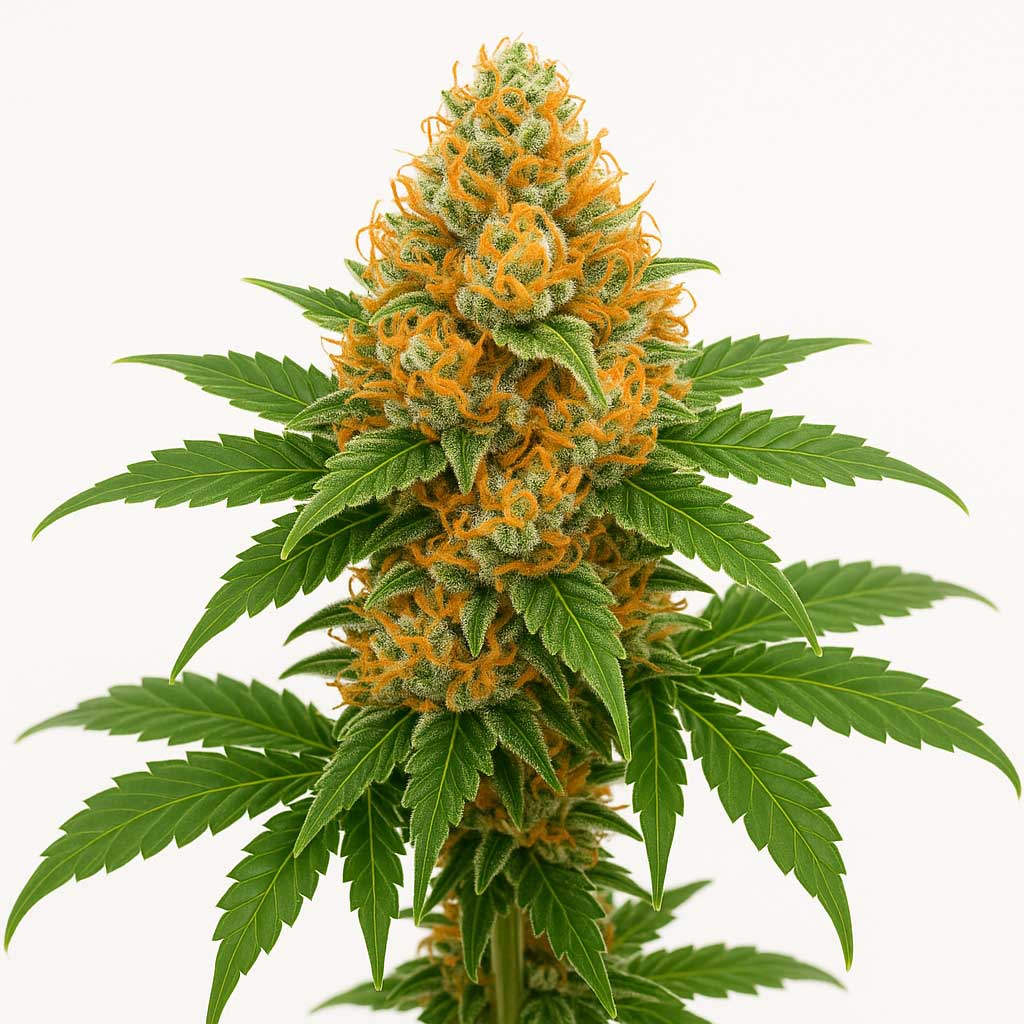Lemonatti (Cannabis Strain) — Strainpedia
Lemonatti is a sophisticated Sativa-Dominant Hybrid cultivar derived from a cross of Gelonade x Biscotti. Recognized for its dense, vibrant buds and an intense, zesty lemon aroma layered with sweet, creamy dessert notes, it is frequently referenced in horticultural education for its high terpene output and potent, clear-headed effects. The information below is intended strictly for scientific and botanical reference.
Quick Facts
| Genetics | Gelonade x Biscotti |
|---|---|
| Variety | Sativa-Dominant Hybrid (approx. 60–70% Sativa) |
| Flowering Time | 8–9 weeks (56–63 days indoors) |
| Yield Potential | 400–550 g/m² (Moderate) |
| Plant Height | 90–130 cm; moderate stretch; responsive to LST |
| Climate Preference | Temperate–Controlled Indoor (Requires stable environment for full flavor expression) |
| Difficulty | Intermediate (Requires effective nutrient and canopy management) |
Scientific & Botanical Overview
Bred by Cannarado, Lemonatti plants develop dense, highly resinous buds that often feature a bright green base with orange pistils and a dusting of white trichomes. The structure is compact but manageable, with a moderate vertical stretch during the transition to flower. The defining feature is the speed and intensity of its aromatic development; the volatile terpenes are highly pronounced throughout the 8–9 week flowering period, often requiring rigorous odor control measures in indoor settings.
Effects & Use-Cases (Reported)
- Commonly reported effects: highly focused, energetic, creative, and euphoric; typically provides a stimulating mental lift with a gentle, non-sedating body calm.
- Use-case context: an ideal choice for daytime activities, creative projects, social interaction, and tasks requiring enhanced concentration and mood elevation.
- Note: These are observational reports, not medical claims; outcomes are not guaranteed.
Aroma & Flavors
- Aroma: intensely zesty lemon and lime (Sprite-like), complemented by sweet vanilla cake or caramelized sugar, with subtle undertones of earthy spice and fuel.
- Flavor: a sharp, refreshing burst of tart lemon zest and tangy citrus on the inhale, which smoothly transitions to a creamy, sweet, and earthy dessert finish (Biscotti influence).
- Terpene associations: limonene (dominant), caryophyllene, myrcene, pinene.
Tested Cannabinoid & Terpene Ranges
| Compound | Typical Range* | Notes |
|---|---|---|
| Δ⁹-THC | ~21–28% (reported up to 37%+) | Known for high potency; THC levels can be very high in optimized environments. |
| CBD | ~0–1% | Generally present at low, trace levels. |
| Limonene | ~0.8–1.5% | Dominant terpene; responsible for the intense citrus aroma and mood uplift. |
| Caryophyllene | ~0.3–0.6% | Spicy/pepper notes; contributes depth and potential anti-inflammatory properties. |
| Myrcene | ~0.1–0.4% | Herbal/musky undertone; provides a grounding element to the high. |
| Pinene | ~0.1–0.3% | Subtle pine notes; associated with focus and alertness. |
*Ranges are literature- and lab-report-informed references and can differ with environment, harvest timing, post-harvest handling, and analytical methods.
Cultivation Notes
- Light Cycle: 18/6 vegetative; 12/12 flowering
- Humidity Targets: ~40–50% during flower; robust airflow is essential for managing canopy density and aroma.
- Nutrition: Moderate feeder; benefits from a balanced nutrient regimen; particularly responsive to high light intensity and stable pH/EC.
- Training: Topping, Fimming, and LST are recommended to control stretch and maximize lateral light penetration across the canopy.
- Harvest Window: Late September to early October outdoors (Northern Hemisphere), requires a dry finish to preserve the volatile lemon terpenes.
Grower Notes (Week-by-Week Snapshot)
- Weeks 1–2 (Transition/Stretch): moderate stretch; establish trellis or support structure; begin transitioning nutrient solution.
- Weeks 3–4: rapid flower site development; perform final, strategic defoliation to clear internal bud sites; monitor for light/heat stress.
- Weeks 5–7: peak biomass and resin accumulation; aroma becomes highly pungent; maintain stable environment and monitor water usage.
- Weeks 8–9: ripening phase; initiate final flush; harvest when desired ratio of milky/amber trichomes is achieved; aim for fast dry/slow cure.
- Post-Harvest: dry 18–21 °C, 50–60% RH to lock in the complex flavor profile.
Timelines shift with genotype and environment; prioritize plant health markers and trichome maturity over calendar counts.
Genetic Lineage
Lemonatti is a highly celebrated creation by Cannarado, resulting from the fusion of Gelonade (Lemon Tree x Gelato #41) and Biscotti (Gelato #25 x Sour Florida OG). This lineage masterfully combines the heady, citrus-fuel characteristics of Gelonade with the potent, creamy, dessert-like structure and relaxation of Biscotti, yielding a strain known for its potent cerebral effects and unforgettable lemon-cookie flavor profile.
Research Insights
The high concentration of limonene in Lemonatti is a central point of interest, as this terpene is strongly associated with the reported anti-anxiety, stress-relieving, and mood-elevating effects that define its Sativa-dominant experience. The interaction of limonene with other key components like caryophyllene and THC is believed to mediate the high, providing intense energy and focus without the jitters often associated with pure Sativa varieties.
Frequently Asked Questions
Is Lemonatti an Indica or Sativa?
Lemonatti is classified as a Sativa-Dominant Hybrid, best known for delivering energetic, focused, and creative cerebral effects.
What does Lemonatti smell and taste like?
It has an intense, zesty lemon and lime aroma with sweet, creamy vanilla cake undertones. The flavor is tart lemon and citrus followed by a smooth, sweet, and earthy dessert finish.
What are the typical effects?
Reported effects include a sharp mental focus, intense euphoria, creativity, and energy, making it excellent for daytime use.
How long does Lemonatti take to flower?
Lemonatti typically flowers in 8–9 weeks (56–63 days) indoors.
Is it suitable for beginners?
Lemonatti is considered Intermediate in difficulty. While it is a vigorous grower, it benefits greatly from training and requires careful management of humidity and nutrient levels to express its full flavor potential.
Educational Disclaimer: This page is provided for scientific and horticultural reference only and does not constitute medical or promotional advice. Cannabis cultivation, possession, and use are regulated by local laws. Always comply with applicable legislation in your region.

